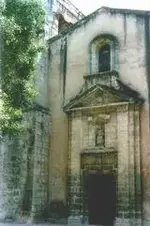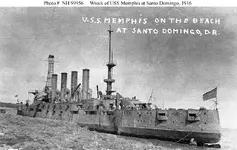Dear Scubafinder;
You wrote:
Oh don't think I haven't been mulling over your earlier thoughts Relic. You are right, the Jeuits had a reason for everything. The different numbers in the pyramids under the cross are interesting too. I've noticed that bells from certain regions will have the same count and configuration under the cross, but this is the only bell I've seen with the 3-2 configuration. It may end up that this is the clue that gives us a region. Who knows....
To address your statement, I would like to offer that your bell has three suns turned at a 45 degree angle, in diamond shaped patterns, at the extreme top of the crossbar and the extreme left and rights ends. Most likely these represented the 3 nails that were used to crucify our Lord and it is very prominently used by the Jesuits. In fact, when St. Ignatious of Loyola formed the Jesuit Order, in addition to the IHS Christogram with cross and the the Sun surrounding it, we may always find a reference to the 3 nails. In the case of the seal, the 3 nails are most generally placed below the Christogram.
As far as the pyramid below the Cross, this wass to represent Mt. Golgotha, the site where our Lord was crucified Many medieval depictions of the cross where rendered with the cross on a mound. This is to signify that it was Jesus who was crucified and not one of many other martyrs of the era. Many times in early Christian symbology, when a cross was rendered not on a mound, this was most probably to signify that the person was not Jesus, rather it was another early martyr. In the case of St. Peter, the cross was always depicted as being upside-down, as that was reportedly how he requested to be crucified.
As far as the number of the actual squares which comprise the pryamid shape, this was most likely due to the fact that the main body of the bell is rather squat. Compared to other taller bells of the era, we can plainly see that the pyramid was comprised of more blocks, due to there being more space. In all likelyhood, the bell was not cast by the Jesuits themselves, rather it was most likely cast by a bell caster who held a contract with the Order to produce bells.
Your friend;
LAMAR








